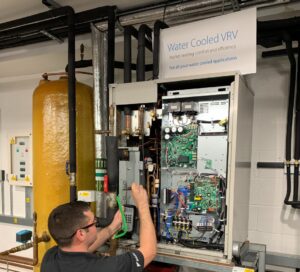We are in the midst of a low-carbon energy revolution. Our old centralised fossil fuel power system is being replaced by increasing amounts of renewables, supported by batteries and other technologies in a smart grid.
For the first time ordinary people are playing a part in generating energy for the National Grid and sharing in its rewards. More than 800,000 homes are now generating their own power through solar panels and within five years home batteries will be just as common.
Combining both technologies can displace up to 60% of household electricity bills, and feed-in-tariffs offer additional revenue. No wonder housing associations and councils are pioneering the use of battery storage and renewables.
As Cllr Meric Apak, cabinet member for sustainability and environment at Camden Council says:
‘Solar plus storage is of huge interest to Camden Council. Fuel poverty is a very serious issue, blighting people of all ages and circumstances nationwide, and storing solar energy can be one of the methods to offer our tenants significant savings to help reduce this burden. This technique helps meet our Green Action for Change environmental targets by actively reducing the carbon footprint across our housing stock.’
The firm I work for, Moixa, has installed smart batteries in more than 600 homes around the UK, two thirds of them in social housing owned by housing associations and councils like Camden. The National Energy Action charity is funding four projects which will see 54 of our batteries installed in London, Durham, Thurrock and Grimsby, to demonstrate how energy storage and solar PV, coupled with other initiatives, can help lower bills and tackle poverty.
Many social landlords have already installed solar PV, so it makes good sense to link them to batteries, which allow their tenants to store the energy they generate by day and use it at night rather than buying from utilities.
The economics are becoming increasingly compelling, as electricity prices continue to rise, battery prices fall, and a market emerges for using home storage devices to provide services for the National Grid, such as balancing supply and demand.
We are keen to allow more social landlords and private homeowners to take advantage of the smart power revolution and at the recent Clean Energy UK show we launched a solar plus storage package, bundling a 2KWh Moixa Smart Battery with a 2KW, eight-panel solar PV system.
We have also developed our GridShare platform, which manages home batteries to push or pull power based on the needs of the National Grid, without affecting the ability of households to save energy. This generates additional income which we share with the batteries’ owners, either landlords or homeowners. We are paying £50 a year, but we expect to increase this as the market for grid services grows. National Grid expects to triple the amount it is spending on these services over the next few years.
Meanwhile, we are working with Oxford City Council on a £1.7m project designed to show how linking batteries and solar panels in a virtual local energy grid can allow a community to double its consumption of the free solar energy it generates while cutting average peak grid load by two thirds.
Moixa has installed smart batteries in 82 homes, a primary school and a community centre in Rose Hill, east Oxford, and providing the platform to manage the network. It means, for example, that electricity generated by the community centres solar panels at the weekend can be used by local people rather than exported to the grid.
Through projects like this we are working with councils and housing associations, utilities and network operators to pioneer technologies that will transform all our lives, cutting household electricity bills and creating a reliable, cost-effective, low-carbon energy system. We are glimpsing the smart energy future.
















